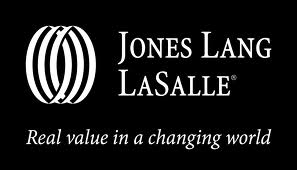 Jones Lang LaSalle’s new quarterly Retail Index lists rents of key high street retail markets in the region
Jones Lang LaSalle’s new quarterly Retail Index lists rents of key high street retail markets in the region
SINGAPORE, 09 December 2013 – Strong demand for quality retail space, coupled with limited supply, has supported high street rents in prime Asia Pacific markets over the third quarter of the year according to Jones Lang LaSalle’s inaugural quarterly Retail Index.
The index, which tracks the rental performance of prime retail space across key markets in Asia Pacific, highlights a stark divergence between the region’s top performer, Hong Kong, and the other monitored markets, showcasing the unique characteristics of this highly sought after market.
Tom Gaffney, Head of Retail for Jones Lang LaSalle in Hong Kong, commented, “Over the past three years, retail sales in Hong Kong have grown by an average of around 15 percent per year which, when compared to the equivalent in European and US markets, has presented retailers with a promising growth opportunity and an ideal entry point for expansion into Asia.”
“This tremendous growth in sales and rentals over the past three years is largely due to a high demand from retailers, who are looking to establish a presence or expand their existing footprint in the City, coupled with limited supply – an imbalance on which landlords have capitalised. Given the extent of demand, double digit growth in sales, and limited opportunities, it is little wonder that rents in the Hong Kong market outpace the rest of the region and we predict this trend will continue well into 2014.”
Looking ahead, Anuj Puri, Jones Lang LaSalle’s Head of Retail Asia Pacific and Chairman & Country Head, Jones Lang LaSalle India comments, “As the economy in Asia Pacific continues to improve, retail is once again emerging as a preferred asset class for investors who see consumption as being closely aligned to the region’s growth. China will witness the strongest growth in the retail markets of its top 50 cities, as Hong Kong continues to leverage its proximity to the mainland to fuel its own retail boom. Meanwhile, India still awaits the new FDI regulations to kick-start investment in the market.”
“However we are also seeing more retailers expand into The Philippines, Thailand, Sri Lanka and Indonesia, where the retail market is driven by a growing middle class and an increasingly young, generously salaried and highly aspirational population.”
“Retailers looking to geographically expand their reach within Asia next year should look at a two pronged approach: vertical penetration into existing markets such as China, India and Hong Kong; and a flanking strategy for countries such as Philippines, Thailand, Sri Lanka and Indonesia.”
Key characteristics of high streets in the region’s other popular markets (as end of September 2013) include:
Linking Road, MUMBAI: USD 1,548 per sqm per year
Connaught Place, DELHI: USD 1,444 per sqm per year
While demand for retail space in the Indian cities of Mumbai and Delhi remains healthy, high street rents have stayed flat this quarter as economic uncertainty has seen retailers resisting rental increases.
Russell Street, HONG KONG: USD 28,839 per sqm per year
Leading the region by some distance, Hong Kong high street rents are, on average, four times higher than closest competitor, Tokyo. However, growth has slowed in Q3 2013 as costly rents force retailers to look towards shopping centres in secondary locations.
Ginza, TOKYO: USD 7,340 per sqm per year
Improved consumer sentiment and rising visitor arrivals continue to support the retail market in Japan with strong demand from luxury apparel brands and F&B retailers pushing Tokyo’s Ginza into second place in the list of the region’s most expensive high street rents.
West Nanjing Road, SHANGHAI: USD 5,366 per sqm per year
Offering unrivalled visibility and a high-end atmosphere, West Nanjing Road in Shanghai continues to draw interest from new -to-market retailers who vie for limited space.
Orchard Road, SINGAPORE: USD 4,713 per sqm per year
Often used as the entry point for expansion into other Southeast Asian markets, demand from international retailers for space on Singapore’s Orchard Road remains strong. However, tight supply of suitable space and rising operating costs are putting pressure on retailers who are increasingly looking to the city’s growing number of suburban shopping centres.
CBD, SYDNEY: USD 3,273 per sqm per year
CBD, MELBOURNE: USD 3,178 per sqm per year
CBD BRISBANE: USD 2,973 per sqm per year
As a result of slower spending in CBD retail markets coupled with more subdued demand for leasing, rents on Australia’s high streets have faced pressure in the third quarter of 2013 with increased supply from shopping centres further affecting pricing.
Queen Street, AUCKLAND: USD 2,080 per sqm per year
While rising income levels, a growing population, and improved sentiment is driving demand for retail space on Auckland’s Queen Street, retailer margins for select discretionary categories remain tight as caution around personal finances persists.
